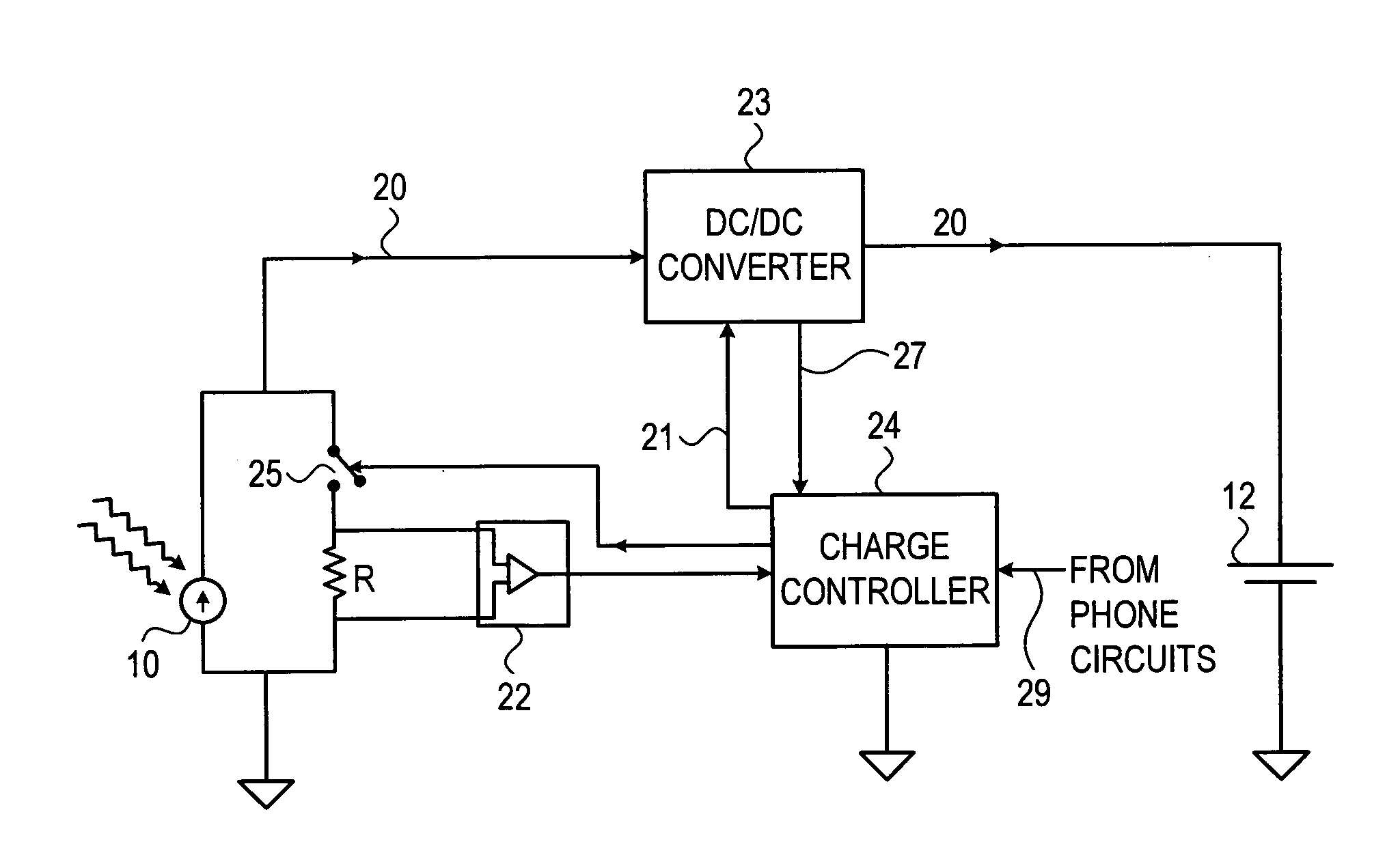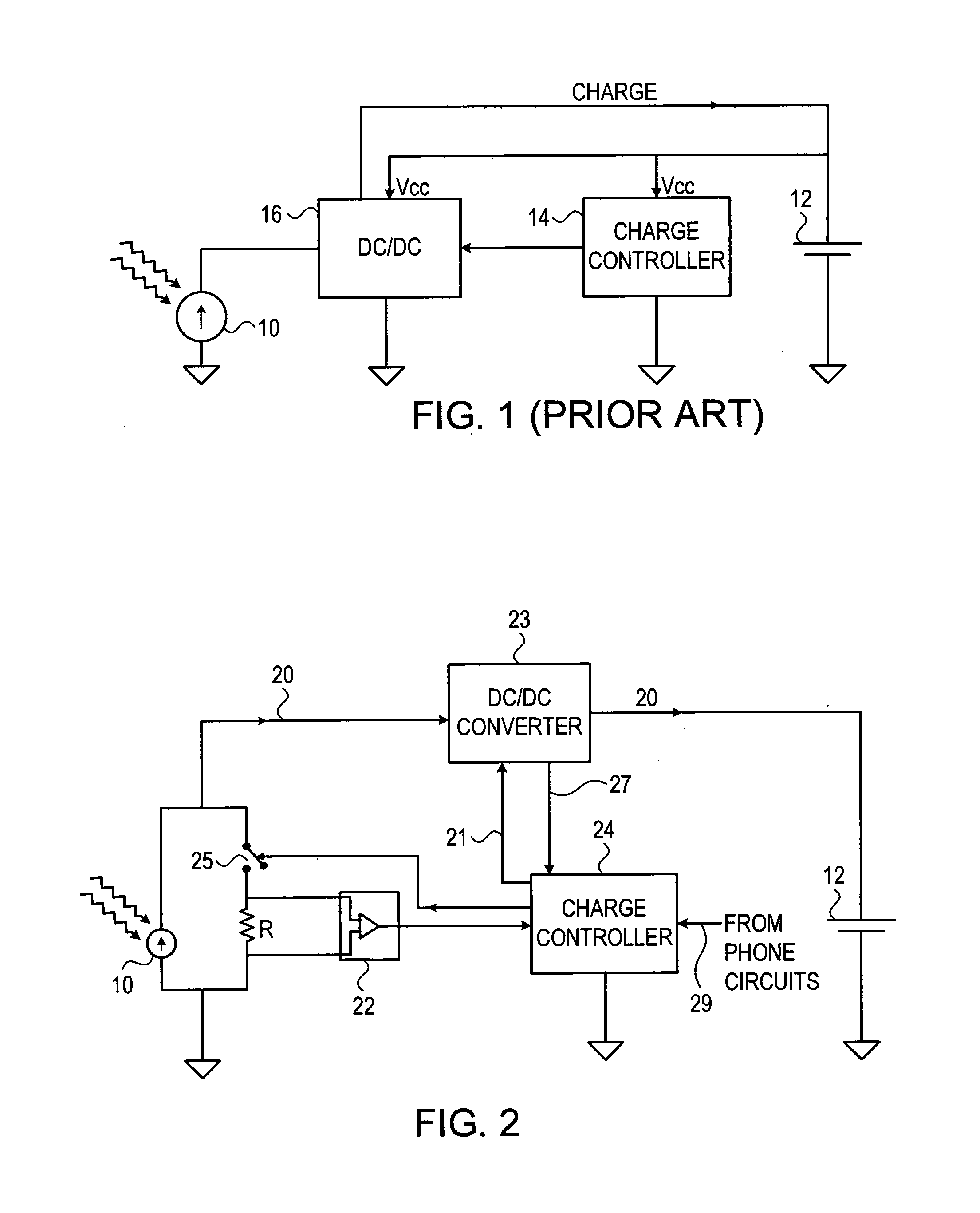Solar cell charging control
a solar cell and charging control technology, applied in the direction of secondary cell charging/discharging, electric vehicles, electrical apparatus, etc., can solve the problems of reducing the charge of the battery rather than an increase of the charge, and the load will not provide a meaningful measure of when the solar radiation is generated, so as to minimize the load of at least one solar cell in order to measure the output power of the battery
- Summary
- Abstract
- Description
- Claims
- Application Information
AI Technical Summary
Benefits of technology
Problems solved by technology
Method used
Image
Examples
Embodiment Construction
[0033]Reference is now made in FIG. 1, which is a schematic diagram of a prior art solar cell 10 charging circuit, for charging the internal battery 12, of a mobile device, such as a cellular phone. A cellular phone is used as the example in the implementations shown in all of this section, though it is to be understood that the invention is not meant to be limited thereto. Although this circuit shows only a solar cell charger, it is to be understood that there could also be additional inputs from external voltage sources, which could use the same charging circuitry as the solar cell, or dedicated charging circuitry. This is applicable not only to the implementation of FIG. 1 but to all the other implementations shown in this disclosure. The battery 12 not only powers the operative circuits of the mobile device, but it also supplies power to the charge controller 14 of the mobile device, and to the DC-DC converter 16 used to up-convert the voltage from the solar cell to a level suit...
PUM
 Login to View More
Login to View More Abstract
Description
Claims
Application Information
 Login to View More
Login to View More - R&D
- Intellectual Property
- Life Sciences
- Materials
- Tech Scout
- Unparalleled Data Quality
- Higher Quality Content
- 60% Fewer Hallucinations
Browse by: Latest US Patents, China's latest patents, Technical Efficacy Thesaurus, Application Domain, Technology Topic, Popular Technical Reports.
© 2025 PatSnap. All rights reserved.Legal|Privacy policy|Modern Slavery Act Transparency Statement|Sitemap|About US| Contact US: help@patsnap.com



